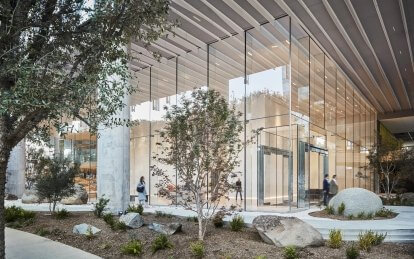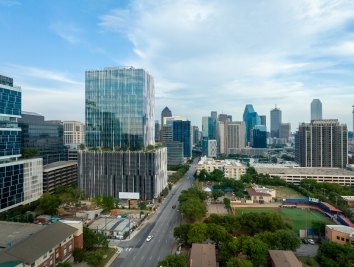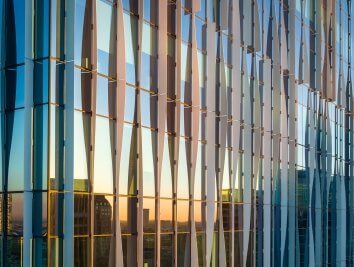Harwood No. 14 Lobby
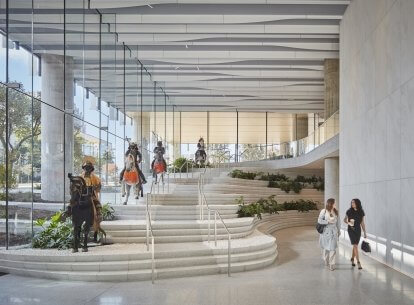
The Design Execution
The lobby of Harwood No. 14 was conceived from the design architect’s vision of a seamless indoor-outdoor experience that celebrates nature as an integral part of the built environment. Project Architect Michael Tomaso shares how his team executed the design and coordinated efforts to invite natural and living elements into the space.
Over the last thirty years, the Harwood District has grown into a menagerie of world-class buildings stitched together by a walkable urban fabric of lush green spaces. Its newest office tower, Harwood No.14, is a testament to the enduring beauty and signature appeal of Harwood’s elegant design sensibility and respect for the human scale. Harwood International entrusted the architectural team of HDF & Corgan with bringing the design vision of Kengo Kuma & Associates to life, carving a distinctive addition into Dallas’ skyline and streetscape.
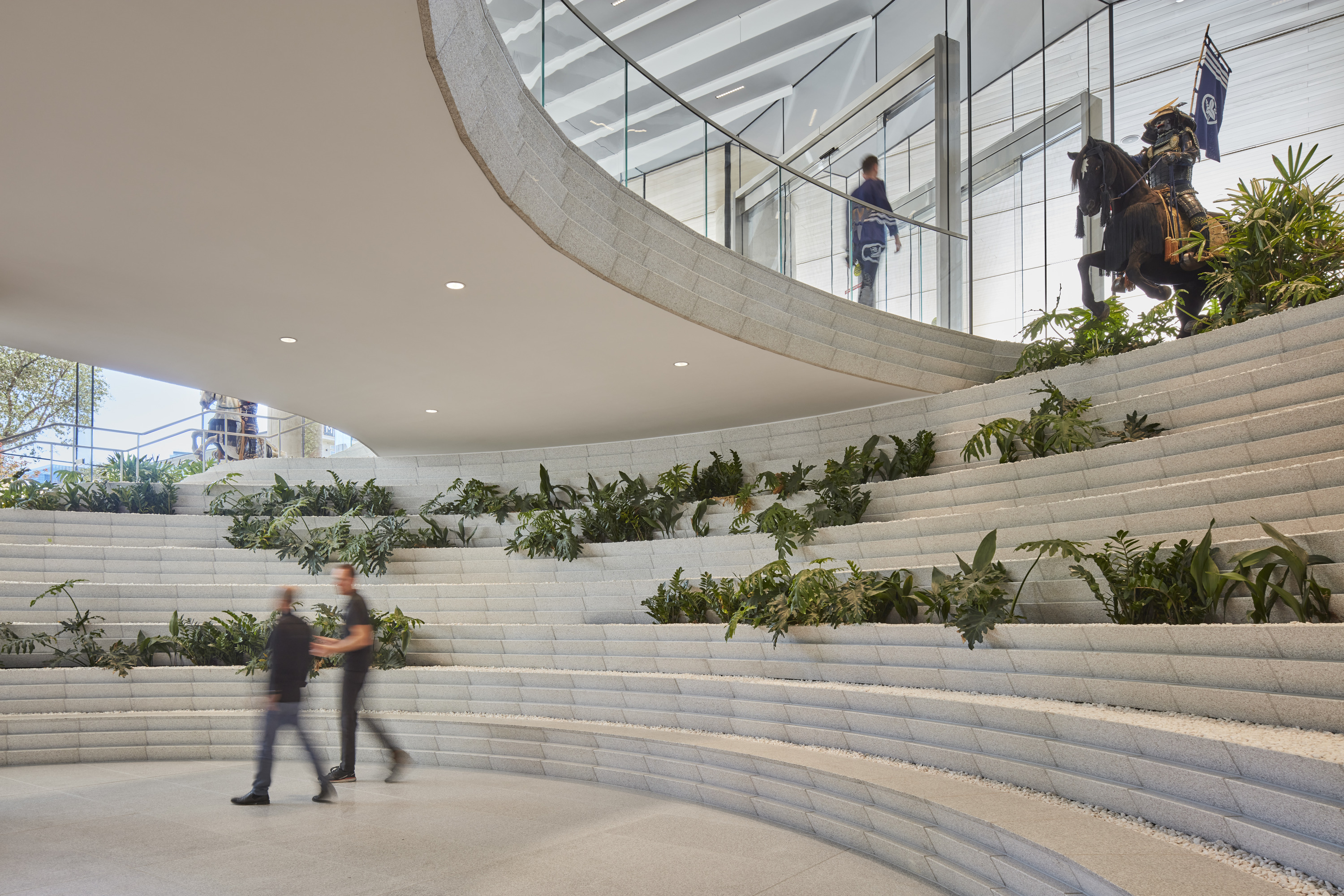
Putting the pieces together
A stereotypical view of exceptional architecture is that it must be exceptionally impractical. The design intent of the No.14 lobby certainly posed numerous challenges to maintaining budget, schedule, and constructability – an organic curvilinear monumental stair terrace, the sheer quantity of stone and variety of finish treatments, the seamless transition of material and spatial expression from exterior to interior space through a double-height transparent envelope – challenges which required Corgan to identify critical hurdles to constructability and opportunities for efficiencies. Through component research, iterative detailing, and coordination between designers, engineers, fabricators, and installers, Corgan lent years of expertise and knowledge in construction and design to bring the architect's vision to life.
Embracing the terrain
The project site slopes nearly 18 feet from corner to corner – an exaggerated topography for Dallas. Environmental constraints can be frustrating, but they provide opportunities for unique problem-solving. The ground floor layout embraced the potential of a split-level entry sequence separating pedestrian and vehicular traffic to bring tenants and visitors enter through a grand 28-foot-tall lobby negotiated by a graceful monumental stair and stepped terraces.
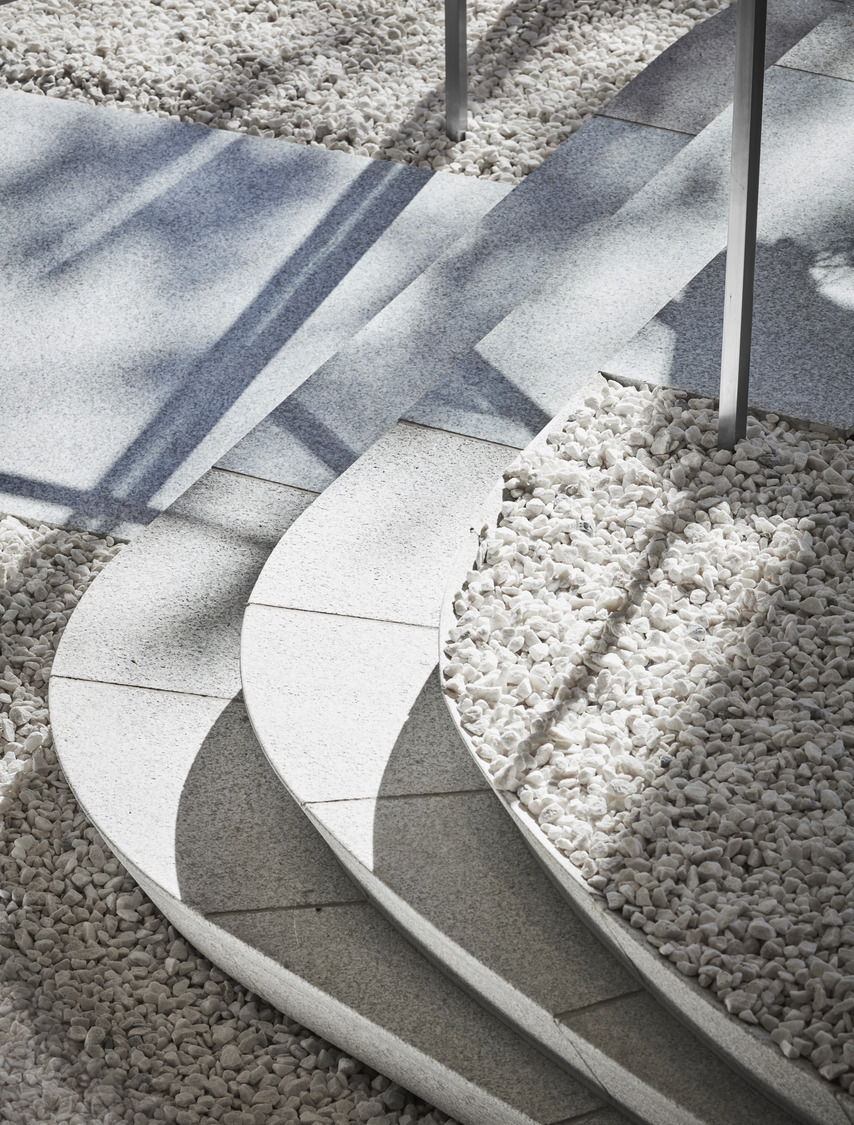
The monumental stair was envisioned as an organic permutation of a curvilinear stone terrace with a sawtooth profile that marries the two lobby levels. As is typical for KKAA’s designs, the terrace was “digitally hand sculpted” – a product of hand manipulation of physical models and paper sketching translated to digital plan drawings.
To avoid the enormous cost and complexity of using 1,500 custom-fabricated granite blocks to execute the design intent, Corgan proposed focusing the unique, stereometrically curved units at tightly radiused curves and transitions between the stair treads and the gently sweeping terrace. This allowed the vast majority of the blocks to be fabricated as identical, straight units. We developed an algorithmic script to analyze different unitization schemes for selection by the design team and created 3D digital documentation of the final design for the stone fabricator to use as the basis for shop drawings. The stone installers were then able to field cut the unitized blocks as required to realize the final product.
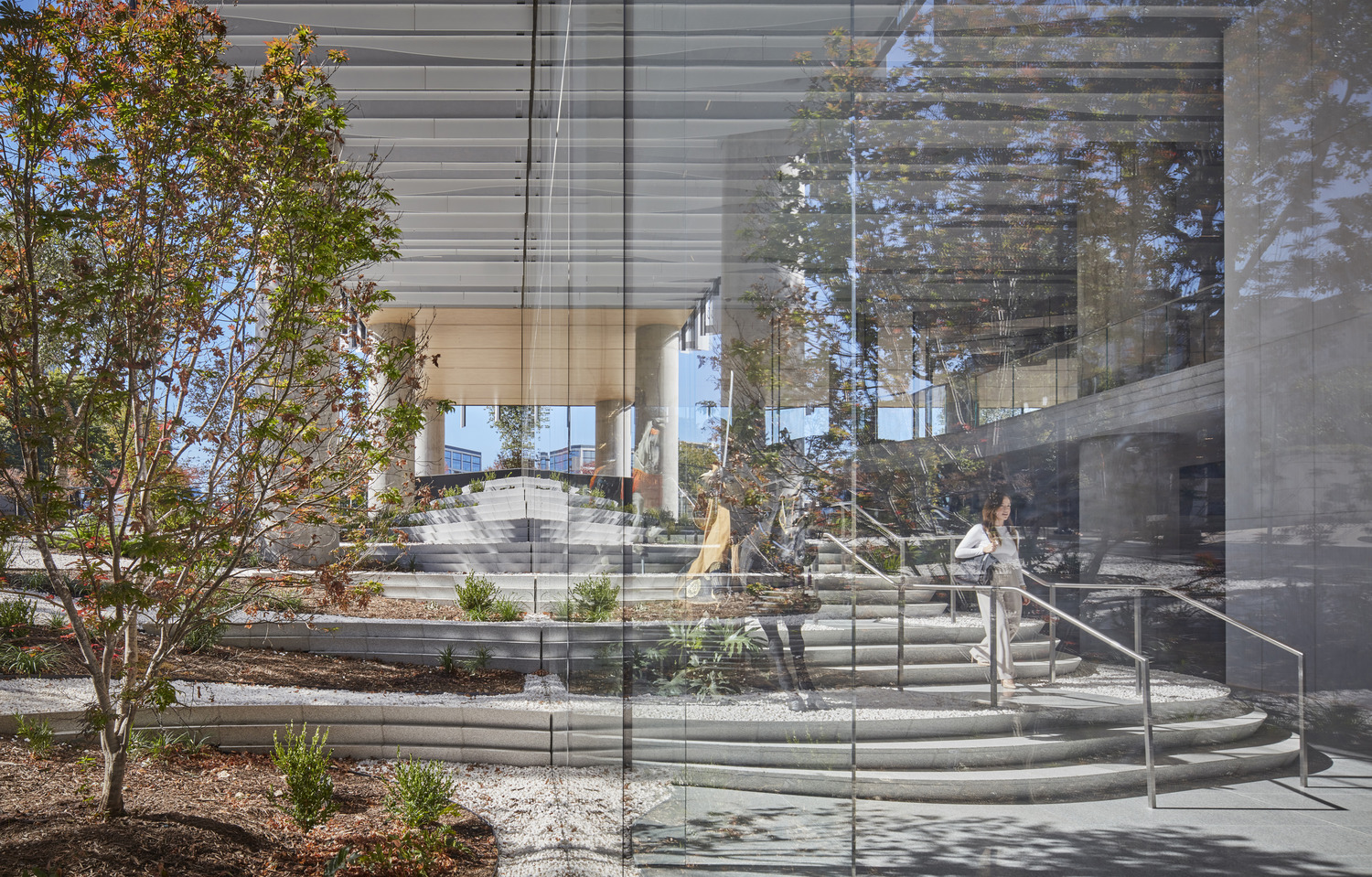
Expansive glazing frames a dynamic, naturally lit space
A major component of the lobby design intent was to blend indoor and outdoor spaces, embracing natural light and landscaping to blur the boundary of the façade. To create this effect, Corgan sought out glazing systems of exceptional visual and structural transparency, finding a system of large format, low iron ultra-clear glazing supported by full height structural glass fins minimize visual clutter and foster the illusion of an invisible façade. We then led the coordination and detailing efforts to push the stone terracing from the monumental stair seamlessly into the outdoor landscape, to pull the pocket gardens from the streetscape into the lobby, and to morph the fabric-like façade fins into an indoor ceiling cloud.
Creating a seamless connection to nature
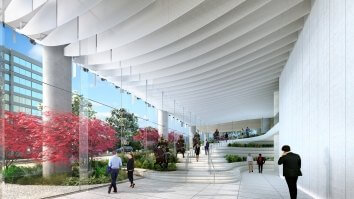
The ceiling hosts curved metal fins which wrap inward from the tower façade, providing a cloud canopy above the mounted samurai charging down the monument.
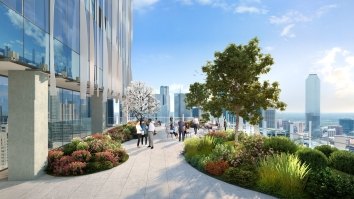
Blurring the boundary between indoor & outdoor with pocket gardens, mature trees, and stone pathways.
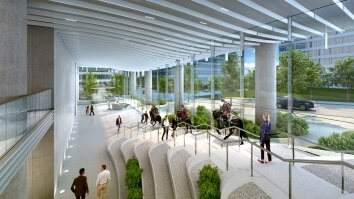
The design takes advantage of the site’s elevated slope for the monumental stair and stone terraces. These elements combine to curate a bold entry sequence embraced by the natural environment.
Bringing the architect’s vision to life
The lobby is a dramatic study of light and texture — dynamic natural light filters through tree branches and onto rough, sculpted, and polished stones. Tall marble cladding on the elevator cores sparkles in direct light and shows off its sclyped surface when the sun washes across its face, mimicking the terrace sawtooth stones at a micro-scale.
Translating vision to reality, Corgan’s streamlined processes, documentation, and coordination underscore the power of technical design to bring to life grand gestures that continue to elevate the built environment while grounding the execution and experience in practicality—where function and beauty meet.
